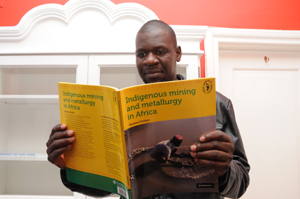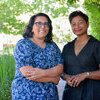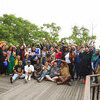Indigenous Africans were successful miners, Chirikure
21 May 2010 | Story by Newsroom Dr Shadreck Chirikure
Dr Shadreck Chirikure
Most modern mines are located on spots that were first mined in pre-colonial times, demonstrating that indigenous prospectors had knowledge of the geology and resources around them, according to UCT's Dr Shadreck Chirikure.
In his book, Indigenous Mining and Metallurgy in Africa, Chirikure of the Department of Archaeology, said this was particularly the case in iron, copper, tin and gold mines.
He said although the socio-political and economic landscape has changed since the 19th century, and resulted in the demise of indigenous technologies, it is our duty in the present to study, document and preserve the African knowledge systems. "These indigenous knowledge systems such as mining and metallurgy help to define the identity of the continent and its heritage," he noted.
The 96-page book is designed for high school learners, undergraduates and the general public. It was commissioned by Cambridge University Press in 2008 under its Indigenous Knowledge Library Series.
Chirikure said he realised that people often think that almost all technologies began with industrialisation, which was introduced during colonialism. "Indigenous people had their own technologies such as mining and metalworking, and these at some point produced better products than those in contemporary Europe," he claimed.
"For example, missionary David Livingstone was surprised by the high quality of iron produced by the Tonga of modern day Zambia and Zimbabwe in the 19th century."
Some ideas from the book are set to be used for the forthcoming documentary on mining in South Africa.
 This work is licensed under a Creative Commons Attribution-NoDerivatives 4.0 International License.
This work is licensed under a Creative Commons Attribution-NoDerivatives 4.0 International License.
Please view the republishing articles page for more information.










